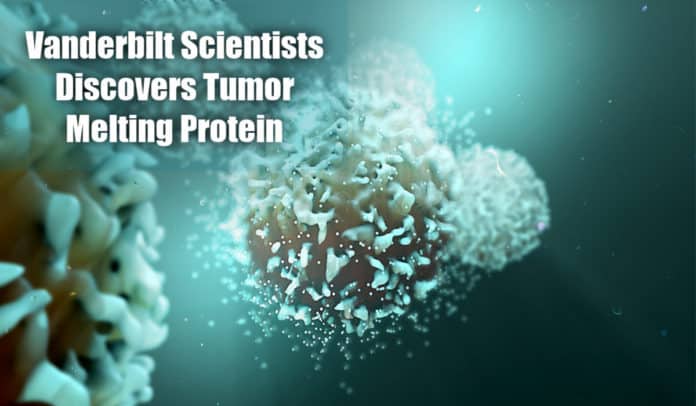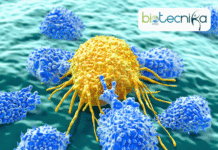Tansey & His Team Finds Another Tumor Melting Protein
Cancer specialists from Vanderbilt University, once again, have identified a protein that can be genetically tailored to obstruct its interaction with cancer genesis gene and effectively melt cancer cells within days.
The research article titled, ‘MYC regulates ribosome biogenesis & mitochondrial gene expression programs through interaction with Host Cell Factor-1’ was released in eLife journal on January 8.
William Tansey, Professor of Biochemistry and Cell & Developmental Biology is committed to discerning the mechanism of MYC oncogene functioning. The noodle-like, highly conserved protein performs vital roles in the normal development of humans, and it frequently becomes suppressed in the most difficult and deadliest to cure cancer types.
Prof. Tansey stated that MYC turns into a nitro in the tank, steering persistent cycles of cell multiplication & division. The rate of cell growth & division determines accumulated mutations and consequently the growth of cancer.
He added that for about 30 years, MYC has been an elusive therapeutic target and has been perceived as “undruggable” due to the absence of structure. To resolve and overcome this issue, Tansey started exploring MYC’s closest structural proteins with the objective of manipulating mutation that impedes the partner’s associations with MYC that leads to cancer growth. Prof. Tansey claimed that if they can prove the physical interaction of MYC and a protein, they can use it for further therapeutic studies.

Tansey and his partners have detected the protein HCF1 (Host Cell Factor-1) as a potential candidate for this kind of treatment development. HCF1 interacts with MYC and is crucial for activating protein production. When MYC containing cancer cell is genetically tailored to prevent interaction with HCF1, the tumor cell starts to self-destruct. Devising a treatment that hinders this interaction is a profoundly promising step in cancer therapy.
Prof. Tansey mentioned that the interesting aspect is that there is no need to eliminate the entire functioning of MYC. It is similar to the Achilles heel, the target is very specific.
This the second protein found by Tansey that has an affinity to MYC and acts like this. A very close behaviour was shown by the protein WDR5, previously discovered by Tansey and his partners, Orrin H. Ingram II, Cancer Professor, and Stephen Fesik. Both the proteins were simply hidden in plain sight.
Prof. Tansey asserted that MYC physically attaches to DNA to stimulate genes. Only two domains are needed for protein transcription factors: activation & DNA binding domain that triggers DNA to transcribe and translate. They are interested in the interluding bit, the orphan protein chunk that none has explored.
The major discovery was attained after four years of strenuous work. Tansey’s lab plans to obtain a better sense of how HCF1 operates with MYC & how it impacts other protein functions.
Tumor Melting Protein






